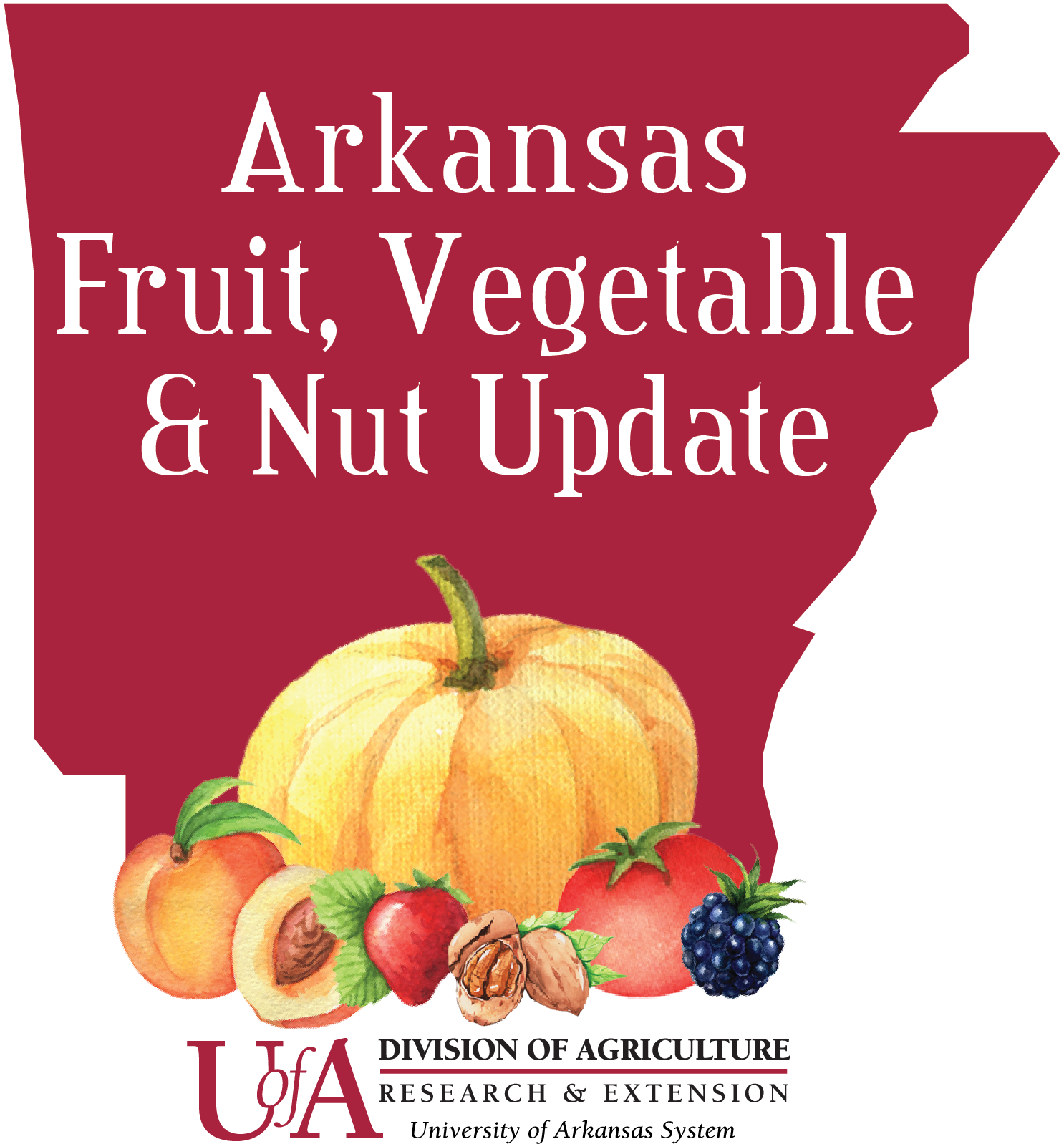
Yield Results from 2017 Pumpkin Variety Trial in Hope, Arkansas
A field trial was conducted in the summer of 2017 at the University of Arkansas Southwest Research and Extension Center (SWREC) in Hope, Arkansas that trialed six pumpkin varieties.
The pumpkin varieties included ‘Iron Man’, ‘Jarrahdale’, ‘Munchkin’, ‘Gladiator’, ‘Jack Sprat’, and ‘Dickinson’.
This trial was conducted in conjunction with Dr. Jackie Lee who was evaluating different herbicides for weed suppression in pumpkins. Results from the herbicide trial will be posted separately.
Table 1. Pumpkin Variety Notes
| Variety | Advertised Avg. Weight (lbs) | Days to Harvest | Color | Uses | Seed Source | Notes | Comments |
| Iron Man | 3-4 | 110 | Dark organge | Good for painting, hard skin | Harris Seeds | Tolerance to Fusarium and Phytophthora Fruit Rots and powdery mildew | Small fruits with an average weight of 2.46 lbs. Stood out for high # of fruits per plat |
| Jarrahdale | 6-10 | 100 | Slate-gray | Ornament/Culinary | Harris Seeds | Technically a winter squash | Predominantly small, but also a few medium and large fruits with an average weight of 4.5 lbs. Good post-harvest holding quality |
| Munchkin | 3-4" wide, mini | 100 | Bright orange | Ornamental, miniature, "kid friendly" size | Harris Seeds | More susceptible to Mosaic viruses compared to other varieties | Average fruit size of 58.33 g or 0.13 lb. Early producer, and consistent fruit size. Good post-harvest holding. |
| Gladiator | 20-25 | 115 | Deep orange | Ornamental/Culinary | Harris Seeds | Resistance to powdery mildew | Predominantly small fruit with many falling below the advertised weight. Average weight for this variety was 7.88 lbs. |
| Jack Sprat | 3 | 100 | Bright orange | Ornamental | Johnny's Seed | Intermediate resistance to powdery mildew | Medium to small fruit with an average weight of 2.00 lbs. Lower # of fruit per plant. |
| Dickinson | ≤ 40 lbs | 115 | Tan | Pie pumpkin | Harris Seeds |
Technically a winter squash. 'Libby's canned pumpkin pie' |
Medium to small fruit and 1/4 of the fruit below the advertised weight. Average weight for this variety was 9.91 lbs. |
Trial Management
Pumpkin transplants were seeded in late April and transplanted (48 plants per variety) to the field on June 1, 2017.
Irrigation was applied to the plants on as needed basis. The trial was located on a fine sandy loam and received 15.51 inches rainfall during the growing season, this was several inches above the seasonal average.
Harvest began on August 8, 2017 and continued for a two week period. Each variety was harvested and compared to the advertised yield for that variety and pumpkins were divided into different weight classes to determine what percentage of the crop could be marketed in 36 inch commercial bins.
‘Gladiator’ & ‘Jack Sprat’ Varieties
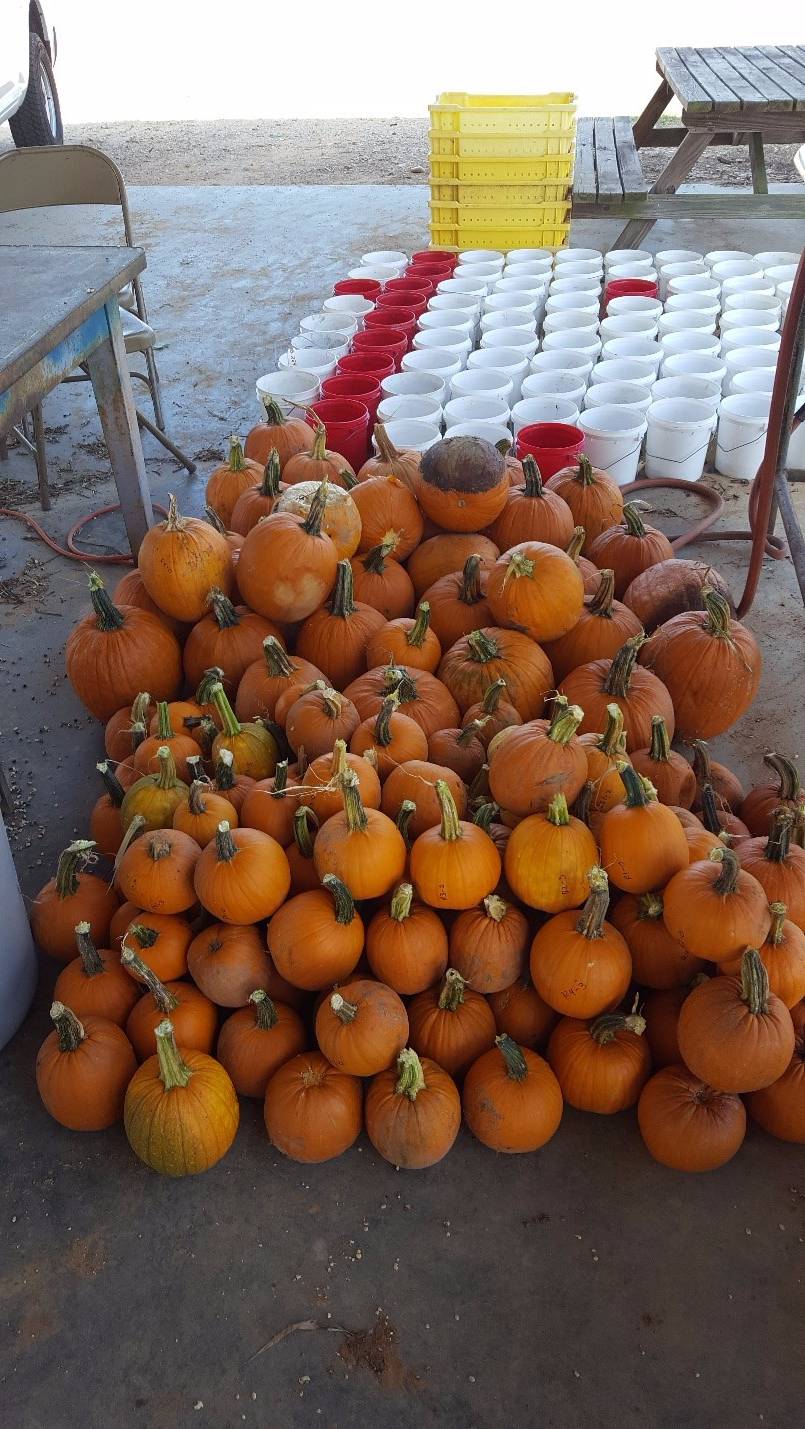
Photo by Matthew Bean
‘Munchkin’ Variety ‘Iron Man’ Variety
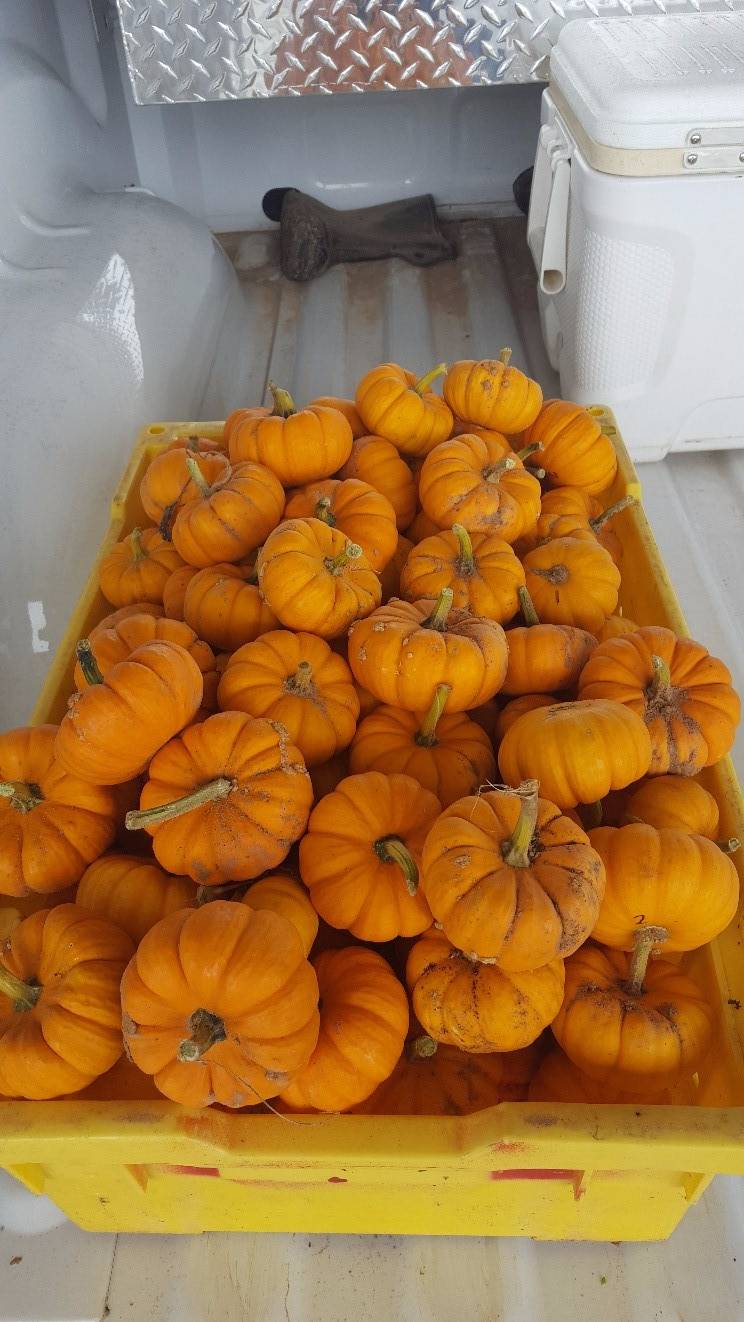
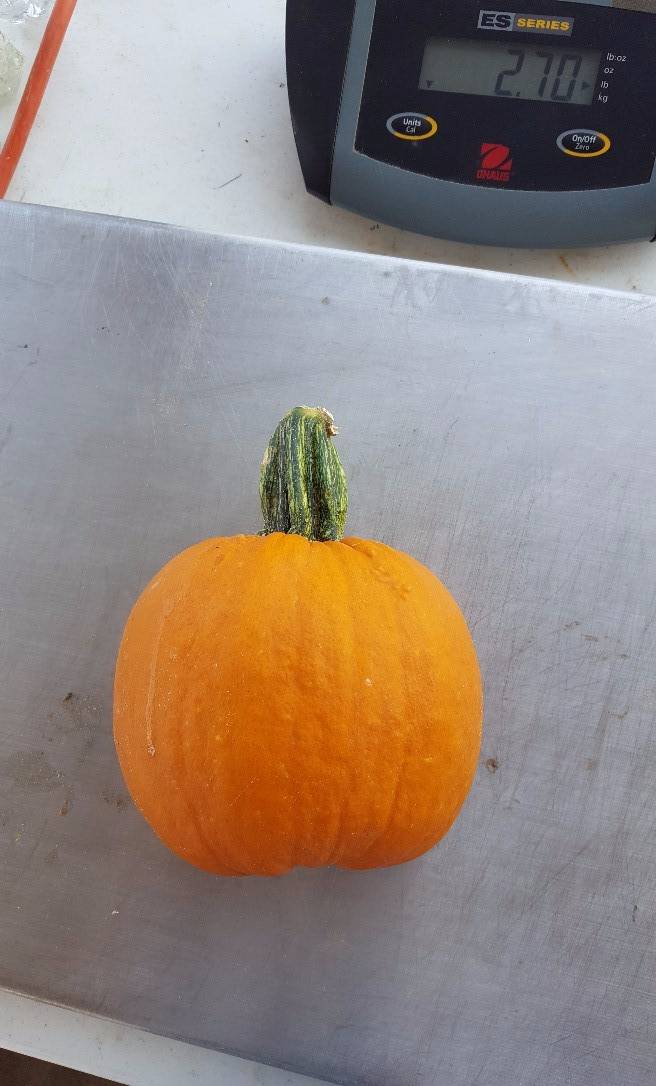
Photos by Matthew Bean
'Iron Man' Variety
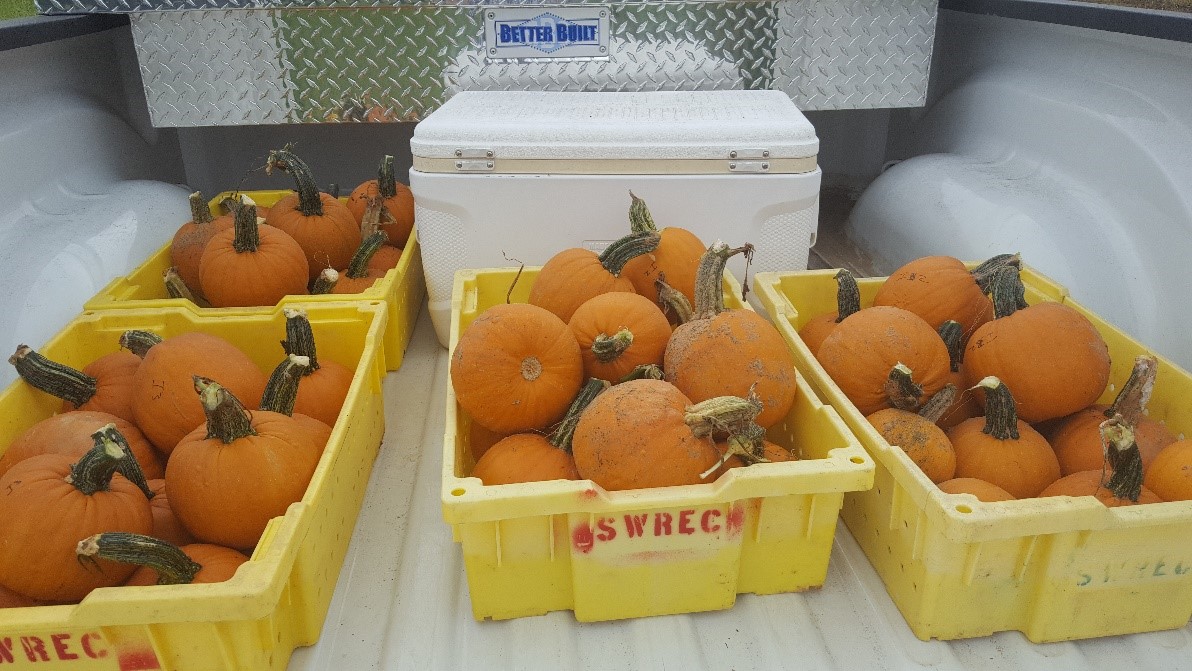
Photo by Matthew Bean
'Dickinson' Variety
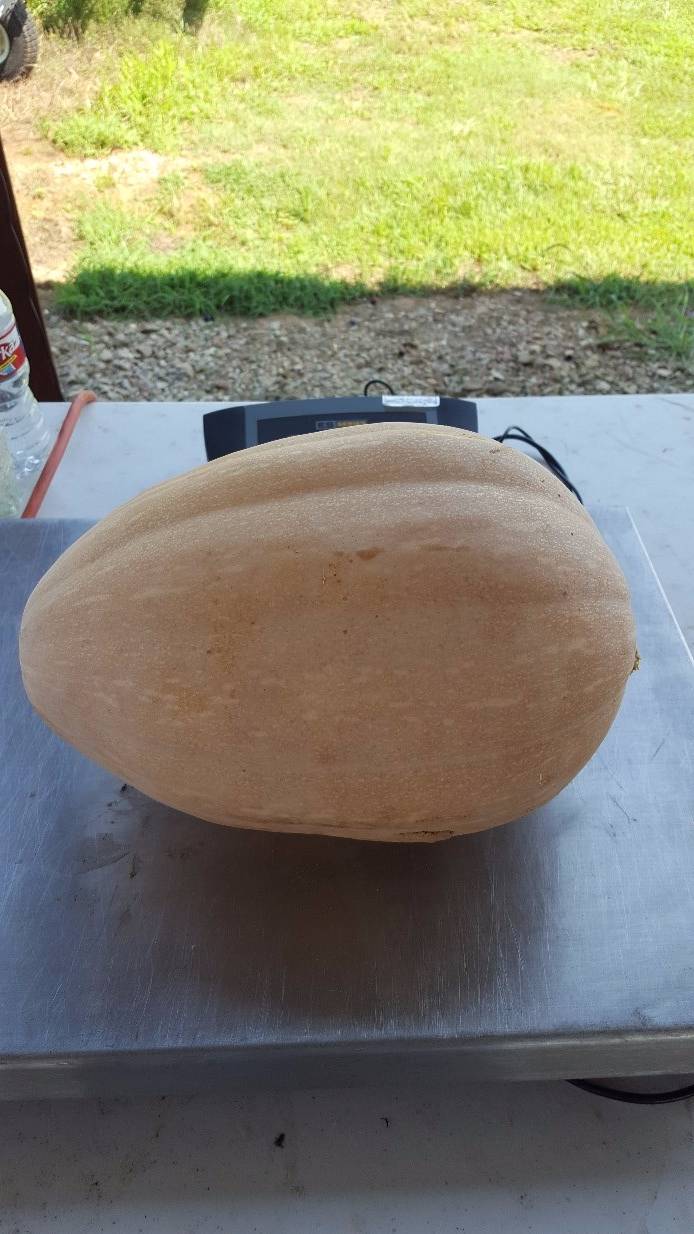
Photo by Matthew Bean
'Jarrahdale' Variety
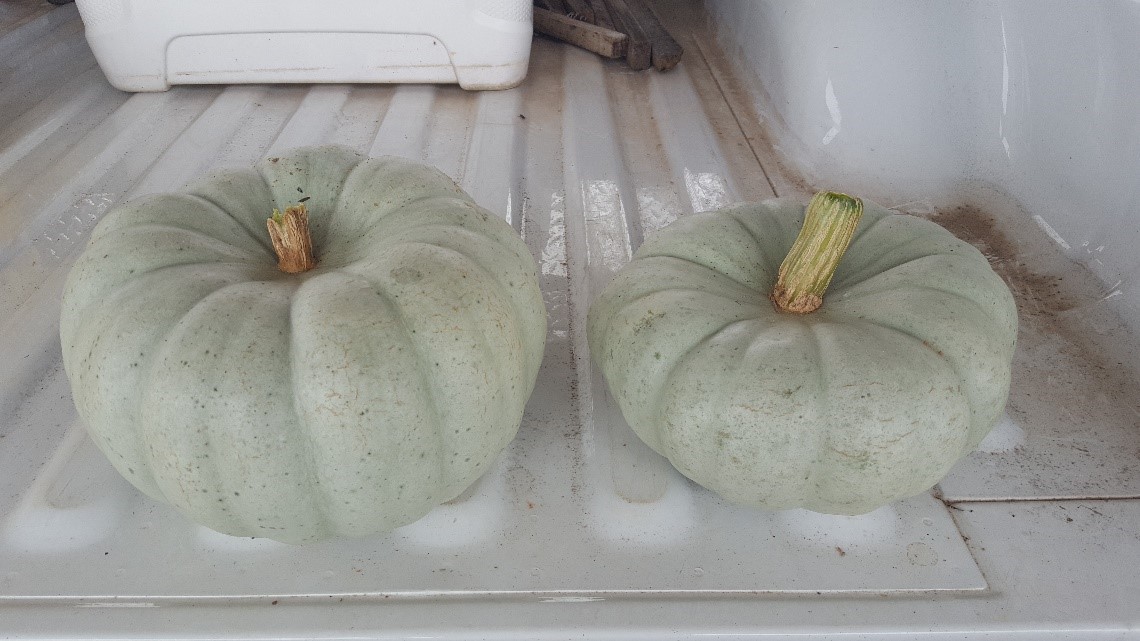
Photo by Matthew Bean
Pumpkin Weight Results
For all of the varieties we evaluated, the average pumpkin fruit weights were average to below average as compared to the seed catalog advertised fruit weights (Tables 1-3).
Table 2. Preliminary Yield Results from the 2017 Pumpkin Variety Trial in Hope, Arkansas
| Variety | Harvested Count | Avg Fruit per Plant | Avg. Weight (lbs) | Avg. Weight (g) |
| Iron Man | 93 | 8 | 2.46 | 1117.4 |
| Jarrahdale | 30 | 3 | 4.5 | 2040.56 |
| Munchkin | 193 | 16 | 0.13 | 58.33 |
| Gladiator | 37 | 3 | 7.88 | 3575.41 |
| Jack Sprat | 60 | 5 | 2 | 906.055 |
| Dickinson | 32 | 3 | 9.91 | 4496.94 |
Table 3. Preliminary yield results from the 2017 Pumpkin Variety Trial in Hope, Arkansas. Yield results separated based on marketable class.
|
30-35 count* |
40-45 count* |
50-65 count* |
||
| Variety | Large | Medium | Small | Unmarketable** |
| Iron Man | - | - | 93 | - |
| Jarrahdale | 3 | 4 | 23 | - |
| Munchkin | - | 193 | - | - |
| Gladiator | - | 2 | 23 | 12 |
| Jack Sprat | - | 22 | 38 | - |
| Dickinson | - | 16 | 8 | 8 |
*Number of pumpkins that are packaged into a 36 inch commercial bin
** Unmarketable consisted of rotting or extremely small fruits
Commercial Marketability of the Harvest
The majority of the pumpkins harvested on this trial were of marketable size and weight (Figure1 and Table 3). The two varieties that had a high percentage of unmarketable (rotting or extremely small fruits) weights were ‘Gladiator’ (32.4% of fruits) and ‘Dickinson’ (25.0% of fruits). The remaining four varieties produced well in quantity and marketability. The results of pumpkin size distribution for each variety and % of unmarketable fruits are shown in Figure 1 below.
‘Iron man’ and ‘Munchkin’ both produced very consistently small sized pumpkins, and had high fruit per plant production. These two varieties would work well for an Agro tourism operations that hosts school tours and give pumpkins to the children who visit. ‘Jack sprat’ had slightly more variability in the size of pumpkins it produced and lower numbers of fruit produced per plant. Results from this 1 year trial would suggest ‘Iron man’ would be preferable over ‘Jack Sprat’ in the 2-3lb sized pumpkin category.
‘Jarrahdale’ produced nice ornamental pumpkins with good shelf life. As of this writing I (Amanda) have had one of these sitting on my front porch since early August and it shown no sign of deterioration. However, this variety produced smaller than advertised pumpkins under the conditions of this study.
Overall ‘Dickinson’ did not produce well, this variety was trialed because it is the processing variety typically used in “canned pumpkin”.
This trial used a reduced management program with only minimal fungicide, insecticide and herbicide inputs. This reduced management program and high rainfall likely influenced the productivity of all the varieties in this trial, but this allowed us to evaluate the hardiness of these varieties under less than favorable conditions.
Figure 1. Commercial Size Distribution of the 2017 Pumpkin Variety Trial in Hope, Arkansas
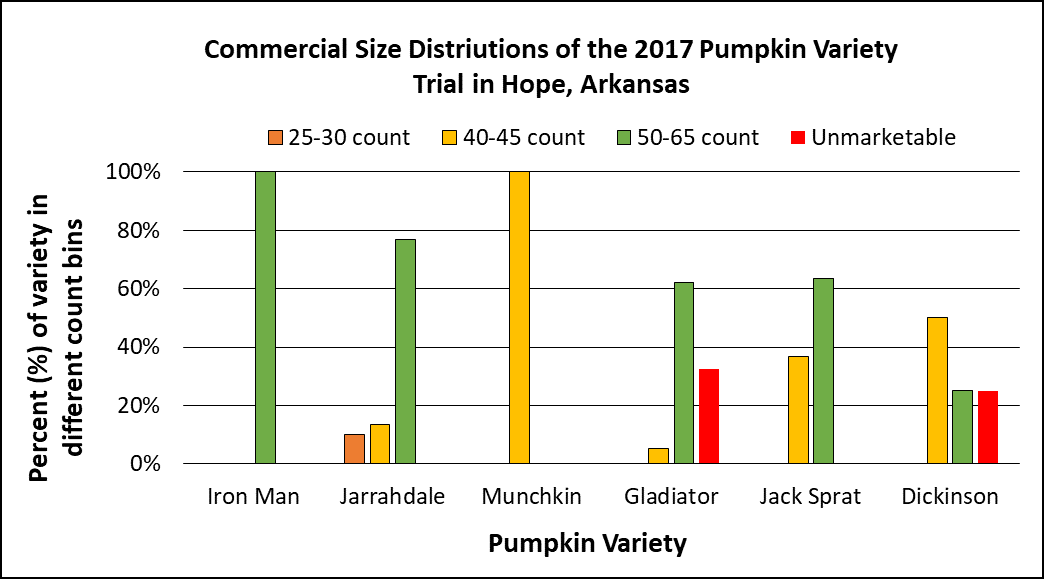
Note: 25-30 count are Large, 40-45 count are Medium sized and 50-65 are small or mini
Conclusions
These preliminary results indicate that pumpkin production under reduced management practices is capable of producing average pumpkin yields in the Southwestern part of Arkansas in a cooler and wetter than average summer season. The observed below average weights or unmarketable weights could be explained by the amount of precipitation that was received during the two week harvest period. The site received 4.52 inches of precipitation in the month of August which is 1.48 inches more than the monthly average. No major diseases or pests were observed throughout the growing season; however, the high rainfall caused one end of the field to flood. It is believed that the flooding may have stunted the plants and subsequently reduced fruit yield. It was observed that the increase in moisture caused some pumpkins to begin to rot. For this reason some pumpkin varieties were harvested somewhat early to avoid losing more fruits to rot.
The planting date used in this trial was not typical of what a grower would use in
order to target the Fall/Halloween market. Our early planting date and cooler than
average temperatures in the month of July, that were conducive to crop growth, may
explain the rapid development of several varieties in less time than the advertised
‘days to harvest’.
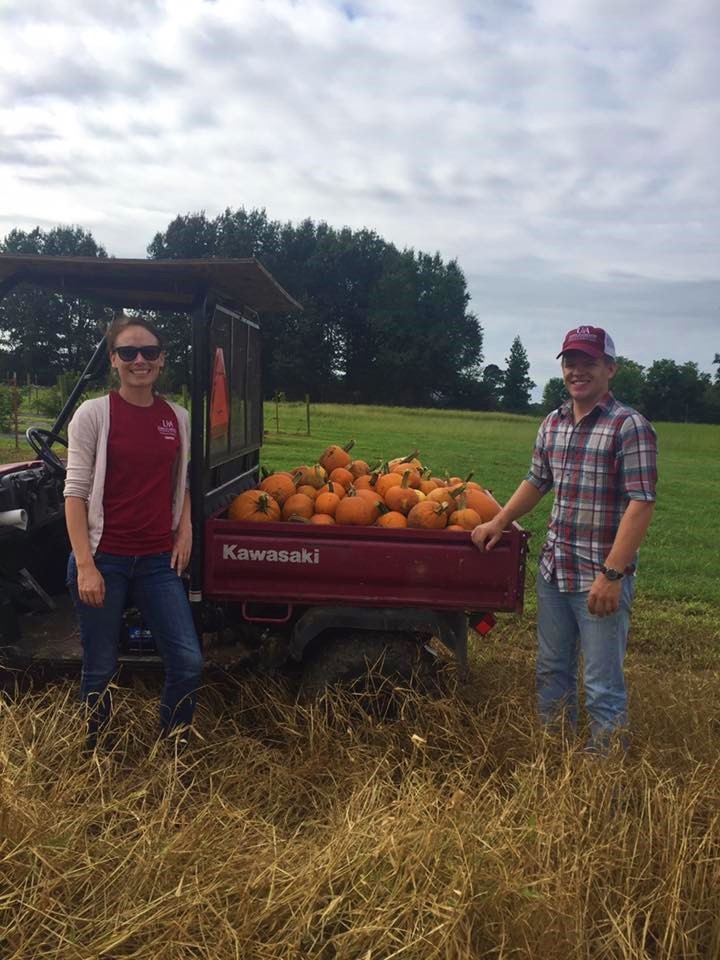 Photo by Vicki Bennet
Photo by Vicki Bennet
A special thank you is owed to Clay Wingfield, Mike McCorkle, and Vicki Bennett at the SWREC for their help in managing trial!